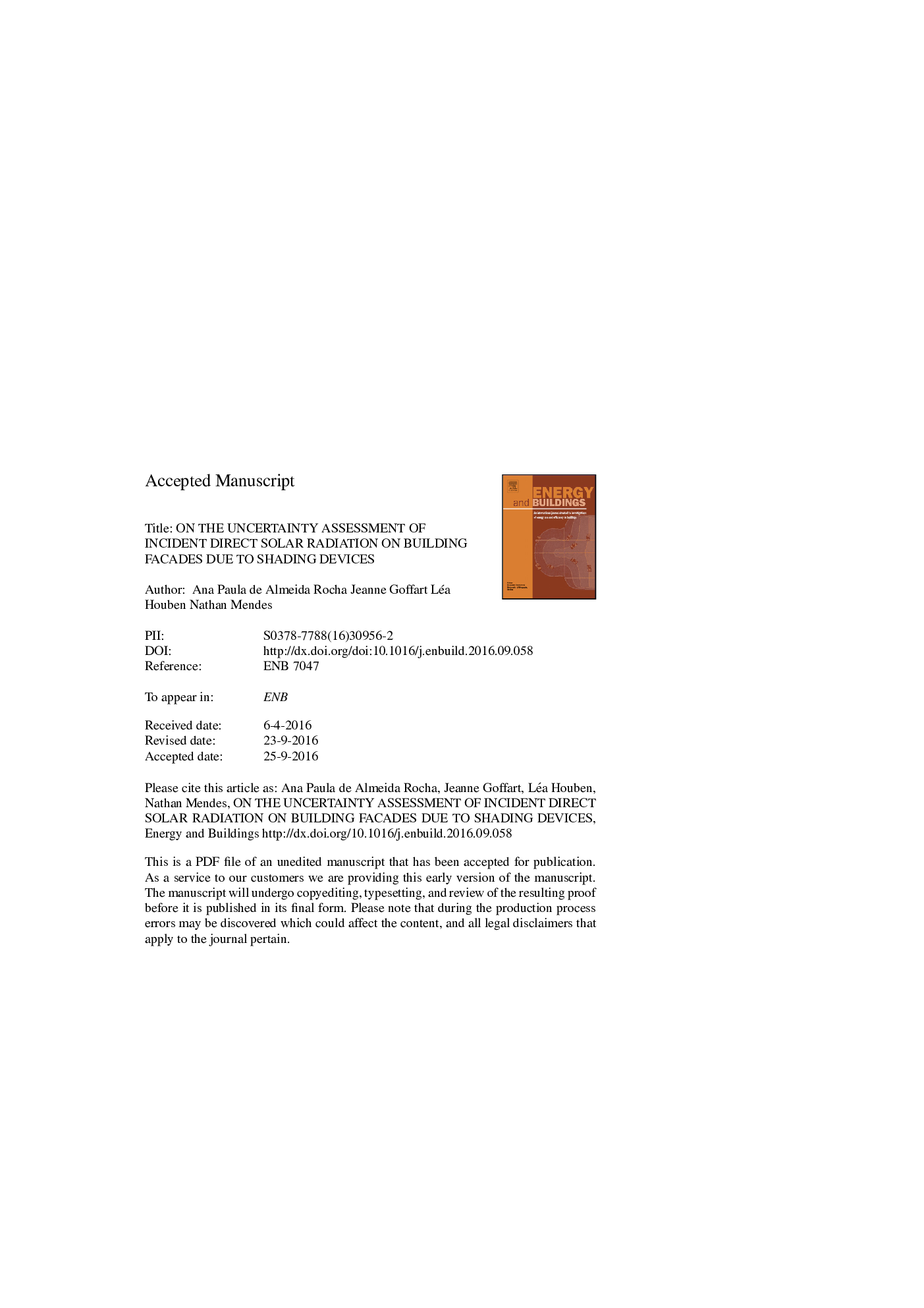| Article ID | Journal | Published Year | Pages | File Type |
|---|---|---|---|---|
| 4919513 | Energy and Buildings | 2016 | 23 Pages |
Abstract
The area of projected shadow on building facades may play a role of paramount importance in the prediction of solar energy conversion and building thermal and energy performance. Algorithms for solar shading calculations may directly affect the accuracy of results obtained by building energy simulation tools. In addition, the consideration of uncertain design parameters imply an estimative of a confidence interval of solar fraction results that determine the reliability as well as the improvement of shading calculation models. In this way, this paper presents a methodology for uncertainty and sensitivity analysis applied to the prediction of sunlit area on building exterior surfaces with shading devices. From a single building model, the solar fraction was investigated for two cities and four typical days. According to the obtained results, more than 20% of all simulation time steps have uncertainties equal or higher than 5% on the solar fraction calculation at 95% confidence level. The maximum values of the uncertainties occur in warmer months, which could significantly impact the building energy balance. Three inputs have higher influence on the uncertainties on solar fraction results: (1) latitude, (2) orientation and (3) width of overhang fins. Perturbation of only 5° on the building orientation may imply important uncertainties on solar fraction, which is normally neglected by designers. The results highlight the importance of assessing the uncertainty of inputs in algorithms such as the one to calculate the surface solar fraction that is an important prerequisite of the final building energy balance.
Related Topics
Physical Sciences and Engineering
Energy
Renewable Energy, Sustainability and the Environment
Authors
Ana Paula de Almeida Rocha, Jeanne Goffart, Léa Houben, Nathan Mendes,
